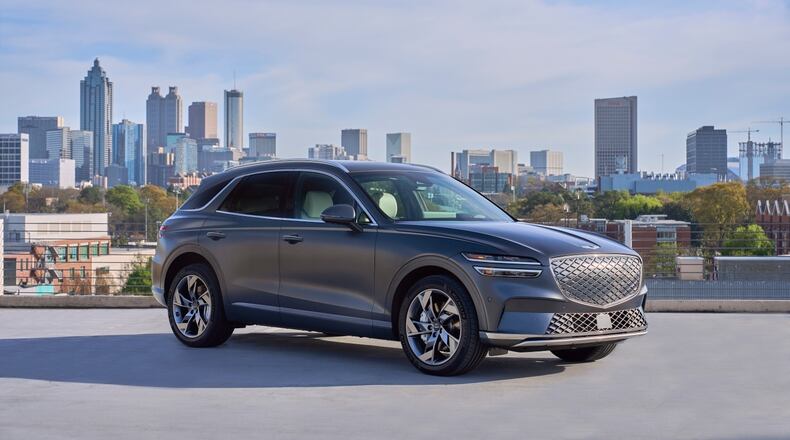As the automotive industry pushes toward electrification, car shoppers can choose plug-in hybrid electric vehicles and fully electric vehicles, among the options. Cox Automotive predicts that electrified vehicles will move into the mainstream in 2025, with 1 in 4 new automobiles sold powered by electricity in some way.
Drivers considering shifting to an electrified car face a crucial decision that depends on driving habits, charging availability, budget and more. EVs and plug-in hybrids, or PHEVs, both have advantages and trade-offs. Understanding the key differences can help you make the best choice for your needs.
Plug-in hybrid and electric cars: The basics
PHEVs plug in, and you can drive the vehicle using its gasoline engine. Plug-in hybrids combine a gasoline engine with an electric motor and a propulsion battery that recharges when plugged into an electric outlet. PHEVs operate on electric power alone for a limited range (typically fewer than 50 miles). Once the battery depletes, the gasoline engine takes over, offering the flexibility of a traditional car. Examples include the Chrysler Pacifica Hybrid, Lexus RX450h+ and the Toyota RAV4 Prime.
Credit: SPECIAL
Credit: SPECIAL
EVs plug in to charge and run solely on electricity with no gasoline engine. They rely on larger battery packs to power an electric motor, eliminating tailpipe emissions and the need for gasoline altogether. EVs must be recharged via home chargers or at public charging stations. Examples include last year’s bestselling Tesla Model Y, Ford Mustang Mach-E and the Hyundai Ioniq 5.
Credit: TNS
Credit: TNS
Today, we compare plug-in hybrids and all-electric vehicles, not hybrids like the Toyota Prius, which do not plug-in.
Factors to consider
Car shopping can be stressful and confusing — especially if you’re thinking about moving to an electrified power train for the first time. Carefully consider the pros and cons of PHEVs and EVs to help ensure you feel confident in your decision. Here are some key factors to keep in mind.
Driving range and fueling flexibility
PHEVs typically offer an electric range of 25-40 miles before switching to gasoline power. This setup allows for all-electric commuting while still providing the flexibility of a gas engine for longer trips.
EVs have significantly improved range since their infancy. Many models now exceed 250 miles per charge with some over 400 miles, reducing range anxiety for many drivers. For example, the 2025 Lucid Air Grand Touring model offers up to 512 miles in range and is the longest-range electric vehicle as of this writing. However, not everyone drives a pricey Lucid Air. Road trips require planning around charging station availability.
Charging and infrastructure
The Department of Energy says that 80% of EV charging takes place at home. This is convenient for homeowners but not always an option for renters. More than 200,000 charging ports are available at more than 70,000 public charging stations across the U.S. An industry consortium of nearly 30 companies has been established to enhance the reliability and usability of these stations.
PHEVs rely less on charging stations since they can switch to gasoline when necessary. Owners can charge overnight at home using a standard outlet or install a Level 2 home charger requiring a 240-volt household dryer plug. Some shopping center parking areas offer free or paid Level 2 chargers for drivers to replenish battery power while shopping and running errands.
EV owners need regular access to charging stations at home or via public charging stations. Most EV owners recharge using portable Level 2 chargers or dedicated units installed at their homes. When out and about, DC fast chargers can give newer EVs an 80% state of charge in about 30 minutes or less. Public charging networks continue to expand, but availability and wait times can hinder some EV owners.
The U.S. Department of Transportation recently paused federal funding for new EV chargers, impacting a $5 billion National Electric Vehicle Infrastructure program until updated guidelines are issued. While this temporary halt could delay new charger deployment, it’s important to note that most of the country’s public charging network today was built prior to those funds, including the extensive Tesla Supercharger network and stations from rival providers like Electrify America and ChargePoint.
Cost considerations
New and used plug-in hybrids and fully electric vehicles may be eligible for up to a $7,500 federal tax credit through the Inflation Reduction Act. That incentive for buying qualified vehicles is significant and has helped grow EV sales. The credit’s availability depends on several factors, including the vehicle’s cost, its final assembly location, the location of the battery minerals sourcing and your income. Learn more from IRS Publication 5900.
PHEVs tend to cost less than comparable fully electric cars due to their smaller battery packs but have higher prices than a similar gas car. Currently, the only PHEV eligible for the federal tax credit is the Pacifica Hybrid minivan.
EVs typically have a higher up-front cost, with an average transaction price of $55,500 at the end of 2024. Manufacturer incentives for EVs remain elevated, helping to lower costs to buyers. The average discount in 2024 was more than $6,700 per sale, one reason EV sales surpassed 1.3 million units last year. Long-term savings come from lower fueling and maintenance expenses. Many local utility companies offer time-of-use discounts to reduce charging costs. Some energy providers, including Georgia Power, offer rebates to qualified customers for home charger installation, further reducing ownership costs.
Maintenance and repairs
Federal law requires automakers to ensure EV and PHEV batteries for at least eight years or 100,000 miles. Batteries degrade over time, but total battery failure is rare, and replacement costs continue a downward trend.
PHEVs have an internal combustion engine and an electric motor, and the vehicles require maintenance for both systems. While the electric motor reduces strain on the engine, owners still need oil changes, exhaust system maintenance and other typical gas-car upkeep.
EVs use fewer moving parts and require minimal maintenance. There’s no oil to change, no exhaust system, no transmission repairs and fewer components to wear out, resulting in lower long-term maintenance costs.
Environmental impact
PHEVs reduce emissions compared to traditional gas cars, especially when driven primarily in electric mode. However, once the gasoline engine engages, emissions are produced.
EVs are the cleanest option, producing zero tailpipe emissions. However, their overall environmental impact depends on the electricity source used for charging. Charging through renewable energy sources can further enhance their sustainability.
Making the decision
Consider your specific needs and circumstances when deciding between a PHEV and a fully electric car. Here are some steps to help guide your decision:
Evaluate your daily commute: If your daily driving falls within the electric range of a PHEV, it could be a practical solution that allows for electric driving. Nationwide, the average driver travels less than 40 miles daily. If you have access to charging at home and regularly drive longer distances, an EV might be the better choice.
Assess your charging options: If you can install a home charger and have access to a growing network of public charging stations, an EV might be more feasible. If charging access is limited, a PHEV could provide a more convenient option.
Consider your budget: While EVs cost more up front, they can provide greater savings over time due to lower maintenance and fuel expenses. PHEVs can serve as a cost-effective transition to full electrification.
Think about long-term sustainability: If reducing emissions is a top priority, a fully electric vehicle is the best option. However, if you still need the flexibility of gasoline for road trips or lack reliable charging access, a PHEV can be a more practical compromise.
PHEVs and EVs offer compelling benefits, and the best choice ultimately depends on your driving habits, budget and access to charging infrastructure. Whether you opt for a PHEV or go fully electric, both options represent steps toward a more sustainable and efficient driving experience.
Chris Hardesty is a veteran news researcher and editor who provides advice on buying, owning and selling cars for Kelley Blue Book and Autotrader.
The Steering Column is a weekly consumer auto column from Cox Automotive. Cox Automotive and The Atlanta Journal-Constitution are owned by parent company, Atlanta-based Cox Enterprises.
About the Author
Keep Reading
The Latest
Featured




